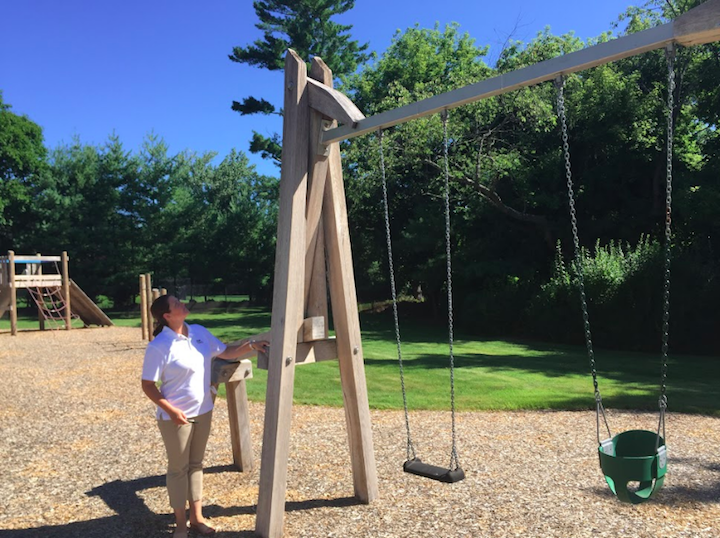Wood is a popular material for playgrounds for a variety of reasons; it is environmentally conscious as well as aesthetically pleasing. The natural properties of wood, however, mean that it is susceptible to damage from weather, frequent use, and insects or fungi. Wood is usually pressure treated because of these reasons, but these treatments need to be considered when choosing a material, playground set, or supplier. The most important concern, in addition to these, is the safety of the children using the playground site. Whatever materials are chosen need to be the least dangerous option available to protect the well-being of the kids.
The CPSC has several recommendations when it comes to selecting pressure treated wood products. Film-forming stains, or stains that do not penetrate the wood, are not recommended for use outdoors. The stain will peel, which reduces durability and exposes children to the chemicals in the stain as well as to the preventatives added to the wood itself. Latex semi-transparent, latex opaque, and oil-based opaque are some examples of film-forming stains. There are other stains that are durable but are far too toxic and irritating for use on playground equipment. Creosote, tributyltin oxide, and pentachlorophenol are all chemicals that are far too toxic to incorporate. Finishes that contain any kind of pesticide are also not recommended for use for the same reason.
All of the other components used on the playground need to be made out of or treated with compatible materials. Hardware can begin to degrade when exposed to some of the chemicals that are used in pressure-treated wood.
CCA Treated Wood
A lot of older playgrounds incorporate pressure-treated wood. This was done in order to prevent the wood from being degraded by insects and fungi, but one of the more common chemicals used to do this is no longer considered safe. CCA (chromated copper arsenate) was a common treatment used on wood products, including playgrounds, for years but is no longer uses as of December 2003. Arsenic is something that certainly compromises playground safety and poses serious health risks. It is important to reduce the chances of children being exposed to arsenic. In order to do this, some have suggested that additional, annual treatments be applied to these older playground sets.
The EPA and CPSC have conducted studies looking into ways to make these sets safer for use. The results of these studies show that oil or water-based sealants or stains are a good way to reduce potential exposure. These kinds of sealants penetrate the wood and prevent the arsenic from leaking out of the material. These preventative measures, however, will not help anyone who is working on and maintaining the set. Cut wood, sawdust, and other exposed areas can still cause contamination. Anyone who is woodworking with CCA treated wood. Installers and builders should read the consumer guidelines for the best ways to protect themselves from arsenic exposure. There are health and disposal regulations regarding CCA treated wood that should be followed in order to maintain playground safety.

